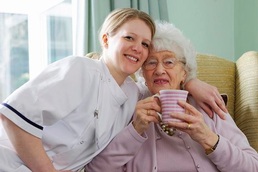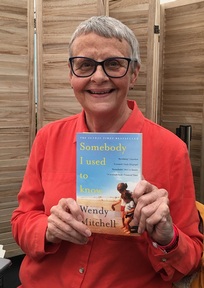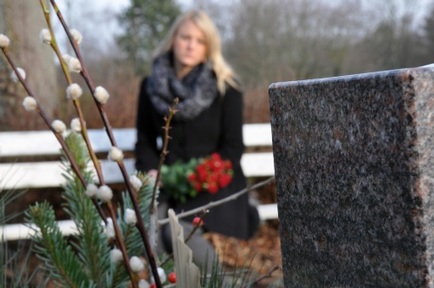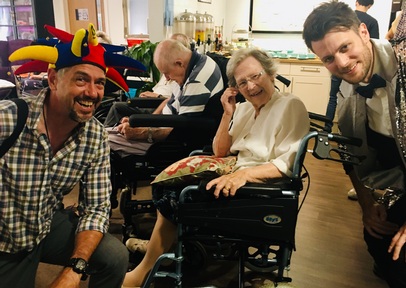carehome.co.uk survey finds care homes divided on uniform policy
Strict uniform policies within care homes are in flux throughout the sector, with providers who once clothed their staff in traditional clothing now developing their own individual philosophies tailored to their service and experience.
This dilemma in uniform policy was confirmed by a carehome.co.uk survey conducted recently, which at the time of writing reads as 49 per cent in favour of uniforms in care homes, 44 per cent against, with 7 per cent selecting ‘Maybe’.

Some see this as representative of the varying challenges that exist within the sector, and operations director for , Tracy Paine, discusses the fluid approach her group has adopted in order to reflect the versatility different forms of care demand.
Commenting on the group’s portfolio of 26 care facilities, she says: “We’ve adopted different approaches to uniforms across the group, according to the setting and preferences of customers and staff teams.”
She continues: “Historically, people working in the more traditional CLS Homes have always worn a uniform. The feedback from residents and relatives is typically that uniforms help them identify staff from other visitors and that name badges are also important so that they know who they’re talking to. It’s important to recognise, though, that there can be significant variation in uniforms and, over the years, we have moved away from more clinical tunics to ‘softer’ workwear.”
Despite the success of this approach, Ms Paine admits there are also instances in which a clinical appearance can prove too much of a hindrance, particularly where mental health care is concerned.
She explains: “However, when we first started pioneering households for people with dementia, we found the opposite: that, in fact, a more homely setting put residents at ease and that uniforms created a barrier to this by immediately setting a more clinical tone.”
Within the provider’s sister company, Belong, who specialise in extra care village environments, a different philosophy was therefore adopted:
“When we developed our Belong villages concept, we were therefore absolutely passionate about having a no uniforms policy on the households. You’re talking about 12 people – often described as ‘small families’ – so those people are very well known to the team who support them.”
The benefits of showcasing clinical expertise through uniforms have their limits, therefore. She continues:
“If customers need a uniform to recognise our people, I’d say that’s a pretty good sign that we’re doing something wrong in terms of the quality of relationships between staff and residents.
“The other factor for us in Belong was about removing the ‘power’ that a uniform can represent, that says ‘you’re different than me’, when what we are trying to do is to build trusting relationships and partnerships with one another, showing equal respect and understanding.
“When staff express their individuality through clothes, it also promotes lively discussions with customers about where we shop and prompts memories around different fashions.”
Clothing supplier have supplied the healthcare market for 13 years and report that their product range have had to adapt to various market shifts, as clients demand more variety.
Company director Joyce Sharkey shares with us some of her observations, commenting: “For many years our customers have ordered the more ‘traditional’ healthcare styles, using colours to identify staff in various positions, Royal for Care Staff, Navy for Nurses and so on. Until four or five years ago, the traditional colours were undoubtedly what we produced the largest numbers of and whilst these traditional uniforms are still quite popular, in recent years, our healthcare customer base has split into, I would say, three groups:
1. Classic styles and colours in a more ‘traditional’ sense
2. Classic style in attractive bright colours, pinks, purples, peacocks and so on.
3. New age and softer style users, using modern styling and colours in their uniform selection.”
According to Ms Sharkey, this differentiation can be seen even with care businesses that are long established. The appearance of care and nursing staff certainly seems to be moving with the times.

She continues: “In August 2006, one of the oldest and most traditional customers split their uniform ordering by department. A care institution of over 100 years, their uniform usage was extremely traditional, they had only come out of dresses, hats and belts a couple of years before! They made the decision that for their Residential and Palliative care units, they would continue with a classic uniform style and continue to use colours to reflect staff positions. However they moved away from traditional nursing colours and personalised their own colour scheme to reflect their strong brand, visual look and feel over their home.
“In their dementia unit, they split from traditional styles and colours completely. We designed them a uniform which was visually much softer, a wrap-over style tunic in a colourful fabric. From this area, they removed rank colours and issued only the one style of tunic. With a few tweaks along the way, this has continued and I believe it works extremely well for them and blends with the air of homeliness they have created.
“Although this customer was our first to make this leap, the numbers of colourful and bespoke garments we produce continues to grow year on year along with demand. Whilst this was primarily common among dementia and neurorehabilitation centres initially, this trend has continued to grow into nursing agencies, care homes, several of our largest councils and even certain branches of the NHS. One large PCT in London can be seen in our purple and black tunics.”
Change is never without its critics, however, and some carers do miss having the badge of professionalism that they feel their uniform provides. Ms Sharkey comments: “We do receive feedback on a regular basis from staff who miss their uniform colour denoting their rank and some seem to feel it was something earned for years of hard work.”
Despite this, some providers are now fully committed to a non-uniform approach, as is the case with Voyage Care who feel that a more casual aesthetic is particularly beneficial when supporting the lives of adults with a learning disability.
Currently registered as operating 285 care homes, together with many day centres, respite and outreach services, Voyage Care Care sales and marketing director Rebekah Anderson believes that a more casual approach has been successful in achieving a home-from-home atmosphere.
On the company’s philosophy she comments: “We want everyone we support to feel comfortable at all times and we strive to provide safe, relaxed environments where people are treated as individuals.
“Uniforms can create unnecessary barriers, especially in smaller services where you’re supporting a maximum of four or five people and they add an element of rigidity which we don’t believe is necessary, or appropriate for the people in our care.
“Uniforms can also feel clinical and when we’re supporting people in the community or accompanying them to social events, they draw unwanted attention, automatically labelling those in our care as different and reinforcing outdated ‘them’ and ‘us’ stereotypes.

“Normal, everyday clothes make staff easier to relate to and they emphasise our commitment to delivering a personalised approach to care.”
Even so, the appearance of care staff still needs to be appropriate and embrace clinical requirements where necessary – as Ms Anderson says: “Our staff always dress smartly and appropriately for the activities they’re doing and where necessary, they wear the correct personal protective equipment.”
Uniform supplier also see the casual approach as catching on, with clothing specifically designed for this purpose seeing strong market growth.
Managing director Daniel Plewman comments: “While there are arguments for and against uniforms in care homes some are choosing to opt for non-standard healthcare uniforms as a compromise.
He continues: “A wide variety of colours can be chosen, often avoiding blues and whites and more relaxed styling making them less clinical. A softer fabric with higher cotton will provide both comfort to the wearer and reinforce the non-clinical image.
“The advantages of this approach is that the care home is avoiding the traditional clinical uniforms that can cause stress to some residents yet can ensure staff are smartly presented.”
Ms Sharkey, of Matrix Uniforms, concludes: “In my opinion, I would say the biggest change of trend in this market is that our customers are more ‘free’ to make these decisions about the uniforms their team wears and that, generally, selecting uniforms is more down to preference, infection control benefits, style and comfortability than any set rules on colour or style.”
To vote on our debate go to: www.carehome.co.uk/news/article.cfm/id/5/should-care-staff-wear-uniforms-in-care-homes
Latest Features News
 25-Nov-19
2019 Election: Boris Johnson leaves social care in 'too difficult box' but Labour vows to end 'crisis'
25-Nov-19
2019 Election: Boris Johnson leaves social care in 'too difficult box' but Labour vows to end 'crisis'
 18-Oct-19
Podcast: Wendy Mitchell and dementia: 'My biggest fear is not knowing who my daughters are'
18-Oct-19
Podcast: Wendy Mitchell and dementia: 'My biggest fear is not knowing who my daughters are'
 27-Sep-19
Exclusive: Care minister backs care workers' call for time off to grieve and attend funerals
27-Sep-19
Exclusive: Care minister backs care workers' call for time off to grieve and attend funerals
 19-Sep-19
Podcast: Gyles Brandreth says poetry helps ward off dementia
19-Sep-19
Podcast: Gyles Brandreth says poetry helps ward off dementia
 30-Aug-19
Edinburgh Fringe funnyman joins comics facing toughest audience at care home gig
30-Aug-19
Edinburgh Fringe funnyman joins comics facing toughest audience at care home gig